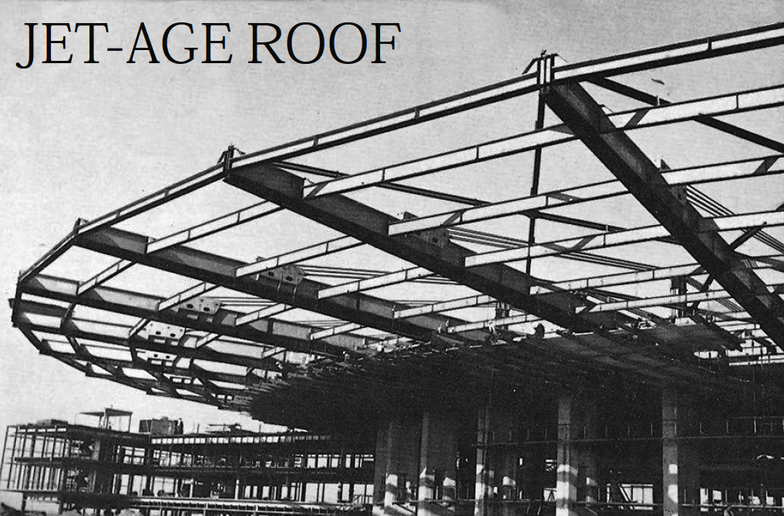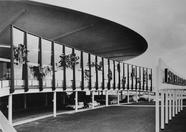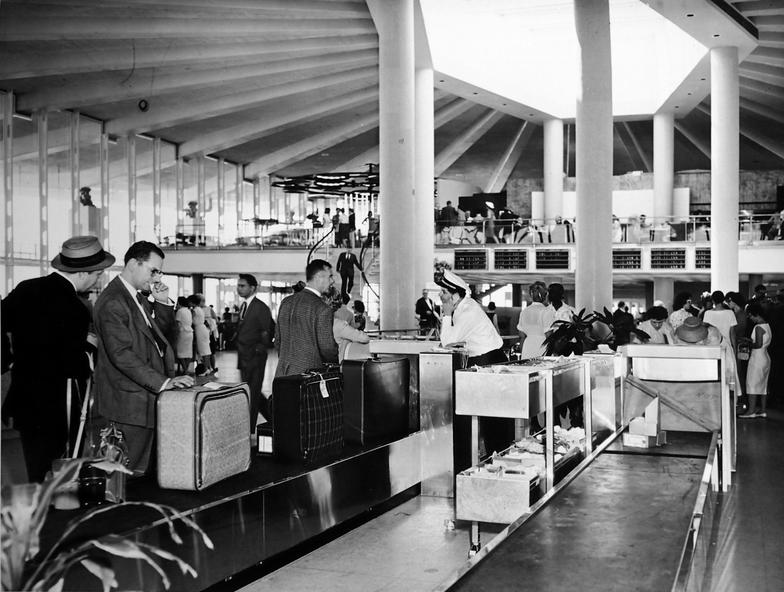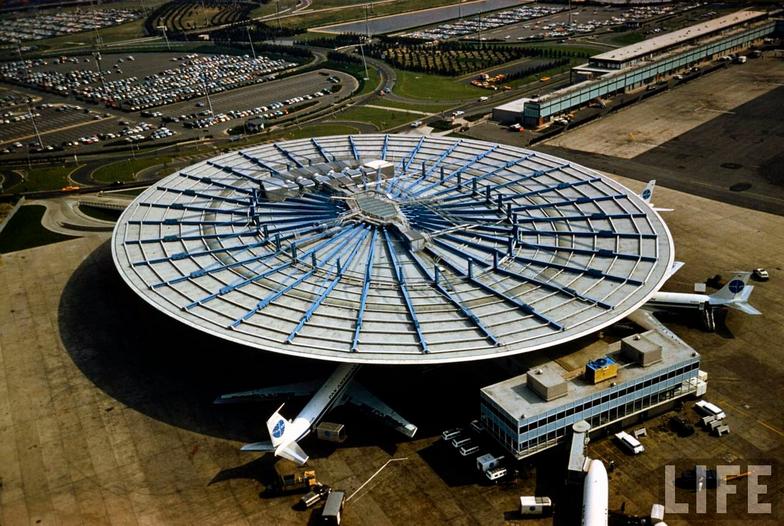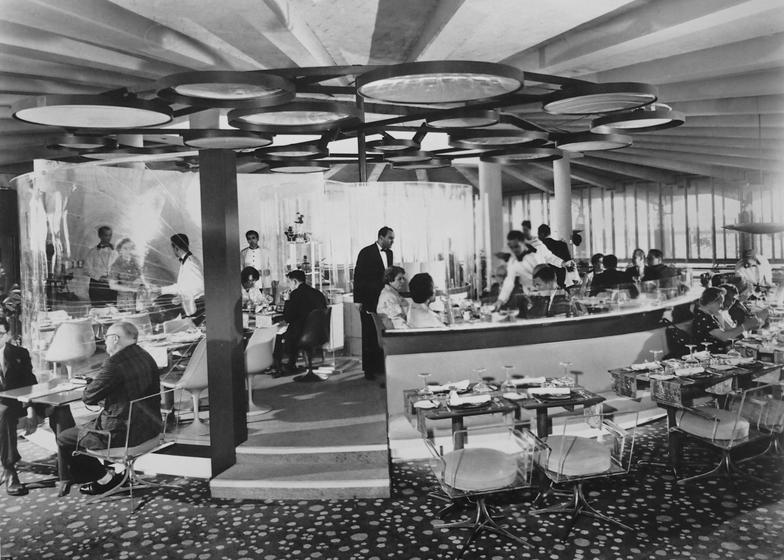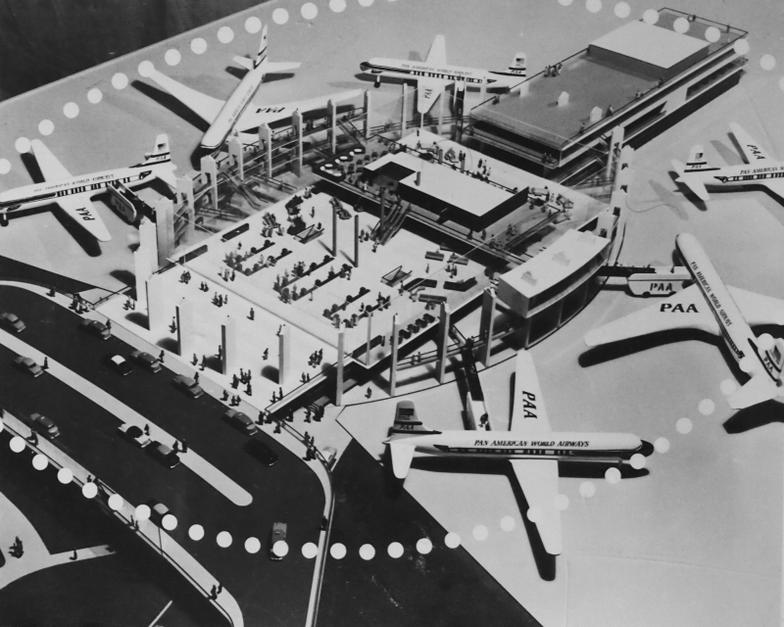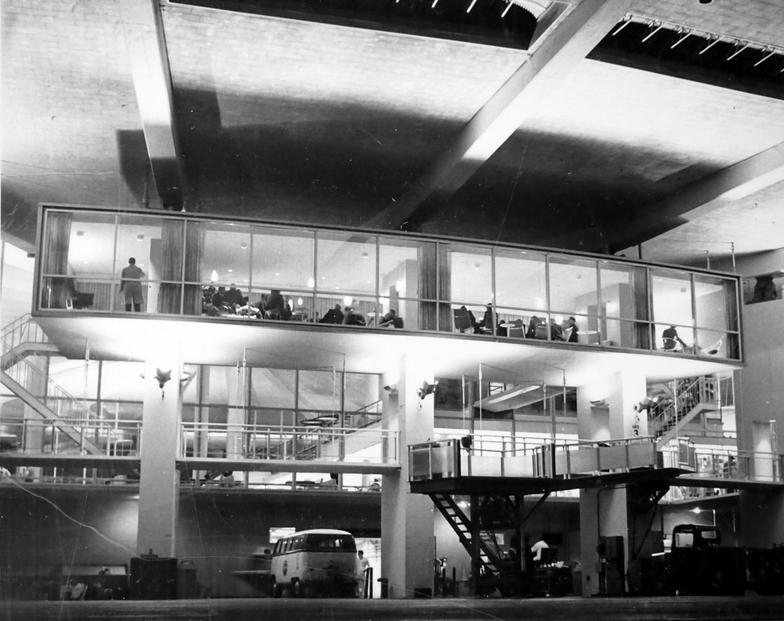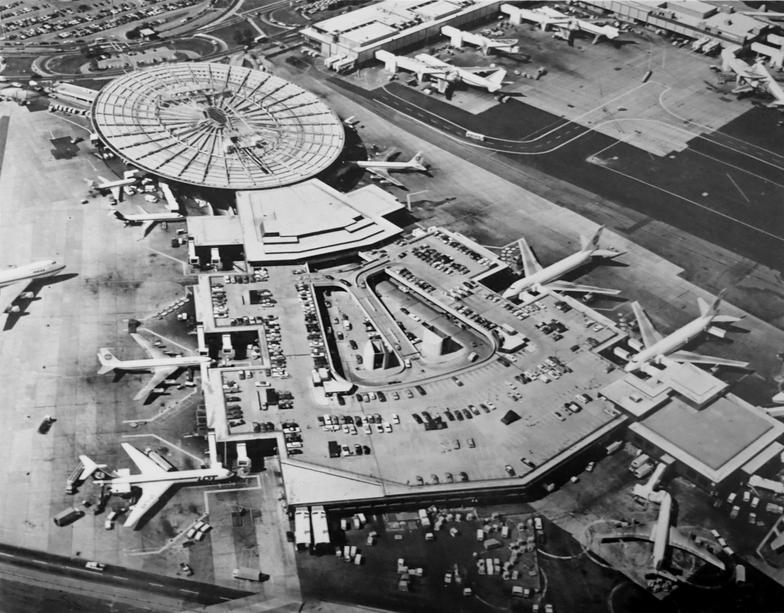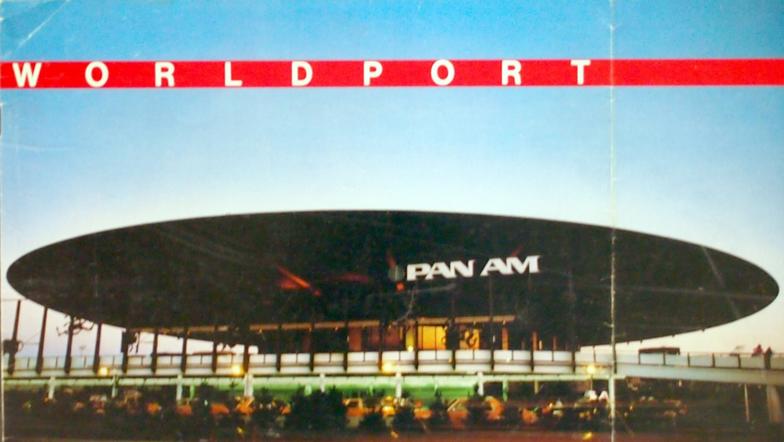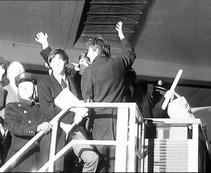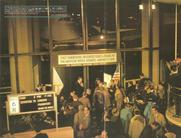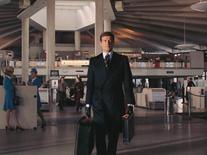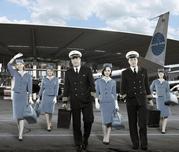In April 1957, Pan American World Airways announced plans to construct an innovative umbrella-like terminal at New York International Airport, then known as Idlewild. The airport's new "Terminal City" master plan called for each airline to design and construct its own distinctive terminal, so the airlines wasted no time in coming up with distinctive yet functional designs intended to impress passengers and competitors alike.
Intended to shelter passengers, aircraft and ramp workers from the elements, the elliptical terminal design chosen by Pan American World Airways would feature a massive four-acre roof suspended over a glass structure underneath by 32 sets of concrete posts and a system of suspension cables.
The terminal was designed by architects Walther Prokosch of Tippets-Abbett-McCarthy-Stratton and Emanuel Turano of Ives, Turano & Gardner and was built by Turner Construction. Ground was broken in June 1958 and the terminal officially opened on May 24, 1960.
The roof's skeleton consists of 4,000 tons of welded steel girders into which was poured 4000 cubic yards of mixed lightweight concrete. Innovative wire mesh fabric laid into the roof slab provided additional structural reinforcement, and cellular glass foam also laid into the slab was used as a sound dampening material to keep the terminal quiet from jet engines and equipment noise. Six steel cables suspend each of the 32 sections of roof from each of the 32 concrete piers. Seen from the top, the roof looks like 32 suspension bridges arranged in an elliptical pattern around a central hub. This central hub is anchored downward by six columns buried in 1,750 tons of concrete and forms the iconic hexagonal skylight at the center of the terminal.
The two-story passenger concourse underneath the roof was originally shaped as a rectangular structure composed of webbed steel mullions and tall panes of glass. The entrance to the terminal had no doors. Instead it was open to the outside by way of an 89-foot wide air curtain that streamed a constant gentle downward air current to separate the outside from the inside of the terminal.
The interior of the terminal had three levels. The bottom-most level, also called the apron level, contained the domestic baggage claim at the front, and the remainder was devoted to baggage handling equipment, mechanical systems and administrative offices. The main concourse level held the air curtain entrance, baggage check-in, ticket counters, small concession stands, and of course the six main departure gates. The upper level, also called the mezzanine platform, which was accessible via a central staircase, two side staircases, and an elevator, was home to an upscale restaurant/bar called The Panorama Room, and a luncheonette-style eatery and coffee shop called The Brass Rail. The rear of the mezzanine also featured the Pan Am Clipper Hall museum, an exhibit of significant Pan Am innovations and accomplishments. At the west side of the mezzanine was a walkway leading to the Clipper Club lounge, which itself was a separate glass and concrete structure constructed between three of the 32 piers.
At the rear (south end) of the terminal was a walkway leading to a smaller rectangular building, known as the south concourse. The building housed administrative offices in the upper floors and two additional gates at the far end of the concourse level.
The front of the building featured a boomerang-shaped elevated ramp leading to the concourse level and air curtain entrance. Cars and pedestrians traveling across the entrance were protected from gusts of wind by a 200-by-24 foot glass windscreen adorned with twelve bronze sculptures representing the signs of the Zodiac. The sculptures were created by renowned artist Milton Hebald.
In late 1965, Pan Am realized they would face capacity issues once their new Boeing 747 jumbo jet arrived. A redevelopment project was launched that would significantly expand the terminal to deal with these new requirements.
Some modifications were necessary to the Flying Saucer to accommodate these changes. The original rectangular curtain wall was replaced with an elliptical curtain wall following the overall path of the roof line above it, and the air curtain was replaced with conventional doors. To accommodate wide-body aircraft like the 747 that were unable to fit under the roof, four concrete jet bridges were built at the existing gates, which extended out to a set of standard retractable jet bridges. The original open air boarding bridges and surrounding platforms were removed.
New construction replaced the existing south concourse with a state of the art 655,000 square foot facility on four levels. It featured ten additional gates capable of handling the 747 and other wide-body aircraft, a shopping mall-like concourse with duty-free shops and a food court, and perhaps the most unique feature - a rooftop short-term parking facility. The arrivals level also added twelve new baggage carousels and full U.S. Customs inspection and Federal Immigration facilities, which allowed the terminal to handle both international and domestic flights and no longer required the use of the International Arrivals Building next door.
The Pan Am Terminal in its many forms was the focus of many notable media events and was featured in several TV shows and movies.
Although the Beatles arrived at the International Arrivals Building next door for their first U.S tour, they departed from under the roof of the Pan Am Flying Saucer on February 21, 1964.
Cary Grant and Doris Day appeared at the terminal in the film,"That Touch of Mink" in 1962.
The terminal, as well as many scenes around vintage 1960s Idlewild were featured in the classic 1963 film, "Come Fly with Me" with Hugh O'Brien and Dolores Hart.
On January 21, 1970, the inaugural flight of the Boeing 747, albeit several hours late, departed for London and into the history books from Gate 6R.
In 1973, Roger Moore made his debut as James Bond agent 007 who arrived at the terminal on a 747 in the classic spy thriller, "Live and Let Die."
In 2011, the Flying Saucer terminal was painstakingly recreated as a computer-generated set for the short-lived ABC Television series, "Pan Am," set in the early 1960s.
Magazine shoots were also popular at the terminal due to its Jet Age styling. In October 1960, Vogue Magazine staged a fashion shoot in and around the new structure. Seeing the remarkable terminal as an icon of trendy Jet Age fashion, the magazine shoot featured models posing on the external catwalks and boarding bridges as a nod to Pan Am’s cruise-like heritage
Renown Ukranian photographer Dmitri Kessel provided the stunning photographs for a September 1961 photo essay on Idelwild Airport featured in LIFE Magazine.
Photo by Joe Pries
The campaign to save the historic Flying Saucer at John F. Kennedy International Airport's Terminal 3.


